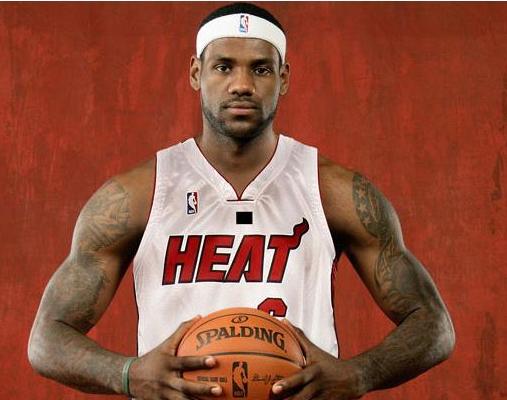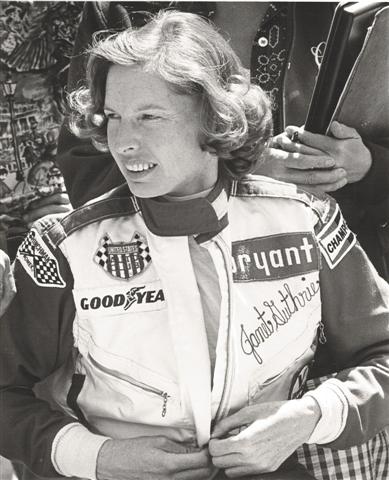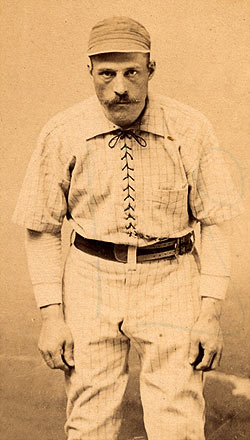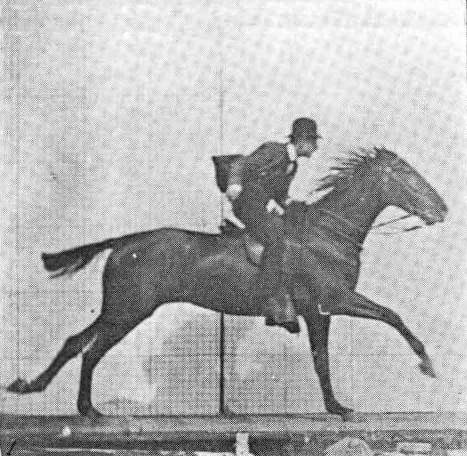While Muhammad Ali was exiled in his own country over his refusal to perform military service in Vietnam, he “boxed” retired great Rocky Marciano in a fictional contest that was decided by a computer. Dubbed the “Super Fight,” it took place in 1970. The fighters acted out the computer prognostications and the filmed result was released in theaters. Marciano summed up this moment of Singularity the best: “I’m glad you’ve got a computer being the man that makes the decision.” A piece of the film:
You are currently browsing the archive for the Sports category.
Tags: Muhammad Ali, Rocky Marciano
Norman Sas, who in the 1940s invented Electric Football, a game of equal parts fascination and frustration, just passed away at 87.
••••••••••
Before O.J. was, you know, O.J.:
Homer mocks the utter ineptitude of the game:
Tags: Norman Sas

“A tiny triangular-shaped car known as the DeltaWing was giving the other 55 fire-breathing machines a run for their money.” (Image by Chris Pruitt.)
As science and technology continue to improve and carbon meets silicon with greater regularity, it’s increasingly difficult to assess the nature of so-called human competition. But even 40 years ago, the line was blurry. From the Economist, an article about cutting-edge auto engineering at the recent Le Mans:
“A tiny triangular-shaped car known as the DeltaWing was giving the other 55 fire-breathing machines a run for their money when it was unceremoniously bumped off the track and into the crash barrier by one of the Toyotas. So ended a brave attempt to show that a car with half the weight, half the horsepower and half the aerodynamic drag could run rings round the dreadnoughts of the sport.
It was not the first time that a radical, lightweight design has challenged conventional thinking in motor racing. Something similar happened when Colin Chapman’s featherweight Lotus 23, with Jim Clark at the wheel, made its debut at the Nürburgring’s infamous northern loop in 1962. With its tiny 100 horsepower motor (a third that of its rivals), the Lotus 23 shot ahead of the field of ponderous Porsches, Aston Martins and Ferraris. After one lap of the rain-soaked track, Clark was 27 seconds ahead of the leading Porsche driven by the American ace, Dan Gurney. The world of motor racing had never seen anything like it before.
The following month, when two Lotus 23 cars—one with a 750cc engine and the other with a 1,000cc unit—were entered for the Le Mans endurance race, French officials promptly banned them for being too good. Chapman swore never to enter a Lotus car for the 24-hour Le Mans race ever again—and kept his promise till the day he died.”
••••••••••
Jim Clark handling the Lotus 25, 1963:
Tags: Jim Clark
In America, our Mark Cubans buy sports franchises for fun and ego and access to all sorts of things. In China, a wealthy video-game magnate like Zhu Jun buys a football team and expensive players and coaches for all those reasons, but for a sense of nationalism as well. The following are a couple of brief passages from an interview the owner of the Shanghai Shenhua did with Patti Waldmeir of the Financial Times, which reveals a larger picture of a China that hopes to import what it needs for now while nurturing generations who will be able to create these things for themselves in the future.
••••••••••
“‘Football is a game every man loves,’ he says. ‘Through playing football, we hope to become stronger. China is becoming richer nowadays but, from my point of view, China is rich rather than strong. The country is lacking resistance. But football is a game full of resistance.’
What kind of resistance, I wonder? ‘Conflict,’ he replies. ‘China is not strong because people never say ‘No’. Tradition makes them restrain themselves rather than being open. What I am doing is to prove we can actually do everything, no matter whether the general public understands us or not.'”
••••••••••
“If the hope is that world-class players such as [Didier] Drogba and [Nicolas] Anelka can help create a world-class football nation to rival China’s status in the global economy – or for that matter, in ping-pong – it will not be easy. A mere 2,000 years after a game suspiciously like football was invented in China, the world’s most populous country has yet to make its presence felt in the world’s most popular sport.
The Chinese love to watch football; when the country qualified for its first and only World Cup tournament to date, in 2002, a reported 170m new television sets were bought to follow the team’s progress. But Chinese state media has quoted football officials as saying that only 100,000 children, in this land of 1.3bn, are playing any form of organised football, partly the result of high levels of corruption in the past.
The country’s presumed next ruler, Xi Jinping, recently outlined his plan for the Chinese game: first qualify for another World Cup; then host a World Cup; then win one. Part of Zhu’s vision, it seems, is that ‘Chinese football needs idols. Good young players will only be attracted when we make achievements.’”
Tags: Didier Drogba, Nicolas Anelka, Patti Waldmeir, Xi Jinping, Zhu Jun
Claudine Longet had it all, for a while.
That ended when the chanteuse murdered skier and free spirit “Spider’ Sabich with a gunshot blast. An excerpt from an April 5, 1976 People article about the infamous incident:
‘What more could a woman want?’ singer-actress Claudine Longet once boasted to a friend. ‘I have my husband, my children and my lover.’ The husband was singer Andy Williams; the lover, ruggedly handsome Vladimir (‘Spider’) Sabich, 31, one of the most daring racers on the international pro ski circuit. In 1975, after a separation of nearly five years, Longet, 35, was granted a divorce from Williams. Then last week, in the rustically elegant stone-and-log house near Aspen, Colo. that Claudine and her three children shared with Sabich, the skier was shot and killed with a .22-caliber pistol.
Claudine, who had been seen with friends earlier in the day at a local pub known as the Center, told police Sabich had been showing her how to handle the gun when it accidentally discharged. She is scheduled to appear in court April 8 to learn if she will be formally accused. Although friends accept Longet’s account of the tragedy, they describe her four-year liaison with Sabich as turbulent. “They have had violent fights in public, screaming at each other,” said one. And it was widely reported in Starwood, an exclusive residential enclave where many of Aspen’s beautiful people dwell, that Sabich had told Claudine to move out of his $250,000 house by April 1. He still loved her, friends say, but felt confined by the constant presence of Longet and the children.•
LeRoy Neiman, a fashion-world illustrator who eventually made wealth and fame from loud, distinctive depictions of prizefighters and placekickers, just passed away. From “Leroy Neiman’s Work Reveals Him, In Some Ways, As A Carbon-paper Dali,” Pat Jordan’s largely dismissive 1975 Sports Illustrated profile of the man and his mustache:
“Neiman began his art career in sewing rooms, as a fashion illustrator for designers like Yves St. Laurent. His work appeared in Vogue, Harper’s Bazaar and Bride’s Magazine. Over the years, through persistence and the cultivation of a highly distinctive style—he is known as ‘a flamboyant colorist’—he became a personality as gaudy as those he portrays. In fact, at a poor showing of the New York Jets one Sunday in Shea Stadium, fans began to yell, ‘Put LeRoy in!’ Often, Neiman’s mere presence at an event overshadows it and the work he produces there. Such status now brings him as much as $25,000 for a painting. He is best known for his sporting canvases and lithographs.
‘LeRoy has style,’ said a publisher of coffee-table books-while sipping a drink at 21. ‘He discovered it 10 years ago and it’s made him a lot of money. He’s a very wealthy man you know, extremely. He has some beautiful suits. Still, I don’t think he’s put his soul into a painting in 10 years.’
At 44, Neiman has a lion’s mane of lustrous black hair, a surprisingly wispy, up-curled mustache and pale, puffy good looks. Perpetually clamped between his teeth or propped between his fingers is a long, thin cigar the length of an artist’s paintbrush. Maddeningly, the cigar never seems to diminish. Like plastic firewood, it appears to be an electronic prop that never sheds an ash.
Neiman’s friend and mentor, Salvador Dali, is also a believer in image-making props and elaborate mustaches, and, like Dali, Neiman has been accused by critics of expending more energy on the creation of his public character than on his art.”
Tags: LeRoy Neiman, Pat Jordan, Salvador Dali
Eugene Selznick, who just passed away, was one of the fathers of American volleyball and no slouch at ballyhoo, either. He recruited basketball legend Wilt Chamberlain to play on a tour in the early 1970s, which helped further popularize the game and make it an Olympic sport. An excerpt from Selznick’s New York Times obituary, which was written by Paul Vitello:
“Chamberlain, the 7-foot-1 N.B.A. star, was near the end of his basketball career in the early 1970s when he took up beach volleyball to help rehabilitate his battered body. Selznick proceeded to cajole Chamberlain into joining him and other top players for a nationwide exhibition tour in the summer of 1973, the year he retired from basketball.
The publicity generated by the Chamberlain tour, as it was known, brought a new generation to volleyball and laid the groundwork for a boom in popularity that began in the ’80s. Beach volleyball became an official Olympic sport in 1996. Selznick coached the men’s Olympic beach volleyball team of Sinjin Smith and Carl Henkel to a fifth-place finish in Atlanta in 1996, and the women’s Olympic team of May-Treanor and McPeak to fifth place in Sydney in 2000.”
••••••••••
Home-movie footage from the Chamberlain-Selznick tour.
Chamberlain visits Ed Sullivan after scoring 100 points in a game, 1962.
Here’s the full 22-minute version of Paul Ryan’s excellent 1969 documentary, “Ski Racing,” which uses bold editing and FM radio rock to help profile that era’s world-class downhill racers. One of the pros included is Vladimir “Spider” Sabich who would die horribly in 1976 in an infamous crime.
From the 1974 Sports Illustrated article, “The Spider Who Finally Came In From The Cold“:
In selling the tour, the sales pitch is not pegged strictly to exciting races and the crack skiers but also to its colorful personalities. There is Sabich, who flies, races motorcycles and figures that a night in which he hasn’t danced on at least one tabletop is a night wasted. Jim Lillstrom, Beattie’s P.R. man, also enjoys checking off some of the other characters.Norway’s Terje Overland is known as the Aquavit Kid for the boisterous postvictory celebrations he has thrown. He’s also been known to pitch over a fully laden restaurant table when the spirits have so moved him. Then there is the poet, Duncan Cullman, of Twin Mountain, N.H., author of The Selected Heavies of Duncan Duck, published at his own expense, who used to travel the tour with a gargantuan, bearded manservant. And Sepp Staffler, a popular Austrian, who plays guitar and sitar and performs nightly at different lounges in Great Gorge, N.J. when he isn’t competing. The ski tour also has its very own George Blanda. That would be blond, wispy Anderl Molterer, the 40-year-old Austrian, long a world class racer and still competitive.
Pro skiing’s immediate success, however, seems to depend on an authentic rivalry building up between Sabich and [Billy] Kidd, who are close friends but whose living styles are as diverse as snow and sand. Sabich is freewheeling on his skis as well as on tabletops. Kidd is thoughtful, earnest, a perfectionist. Spider has his flying, his motorcycles and drives a Porsche 911-E. Billy paints and now drives a Volvo station wagon. Spider enjoys the man-to-man challenge of the pro circuit. Billy harbors some inner doubts regarding his ability to adapt to it.•
Tags: Paul Ryan, Spider Sabich, Vladimir Sabich
I poked fun at Lebron James a couple years back after his ridiculous Decision program, when he announced on live television that he’d be “bringing his talents to South Beach,” but even a Knicks fan like myself can be awed by him. And I don’t just mean the way he plays the game. Here was a guy born with tremendous talent, yes, but born also into a place and situation where so many things could have gone wrong. Instead, despite being the American sports fan’s best frenemy, he’s turned out tremendously on and off the court.
At Grantland, Bill Simmons and Malcolm Gladwell discuss, among many things, an astute comment that Shane Battier made offhandedly about James. That comment:
“He sneezes and it’s a trending topic on Twitter. He is a fascinating study because he’s really the first and most seminal sports figure in the information age, where everything he does is reported and dissected and second-guessed many times over and he handles everything with an amazing grace and patience that I don’t know if other superstars from other areas would have been able to handle.”
Tags: Bill Simmons, Lebron James, Malcolm Gladwell, Shane Battier
Janet Guthrie, an aerospace physicist who fell a little short in her attempt to become an astronaut in the 1960s, was the first female driver to qualify for both the Indy 500 and the Daytona 500. Some archival footage from 1977.
See also:
Tags: Janet Guthrie
Tom Seaver, hugely famous after the Miracle Mets won the 1969 World Series, singing on the Kraft Music Hall.
Tags: Tom Seaver
Major League Baseball long generated most of its income through live attendance, so there was apprehension about “giving away” games on cable, even as screens shrunk and became ubiquitous. But regional–and very lucrative–contracts have proliferated as team owners realized that they weren’t harming their brands but extending them. And cable badly needs baseball, since it can provide so much live content that isn’t likely to be time-shifted. From the Sports Economist:
“Local TV rights provides the revenue stream, but doesn’t this just push back the insanity one level? Why would anyone bid these amounts for baseball — America’s dying pastime? A funny thing happened on the way to the funeral — baseball franchises discovered that a substitute was actually a complement. Over the past several years, teams switched to televising most, if not all, of their games via local broadcast/cable/satellite. Teams long resisted such TV saturation, thinking that televised games substitute for fans in the seats. Texas drew almost 3 million fans last season in spite of extensive regional televising of their games. Yes, a few fans, at the margin, will choose to attend fewer games and watch on TV. However, many potential fans will attend very few games regardless. Televising the games becomes a way of extending the stadium capacity to include these households. The TV advertisers along with cable/satellite fees pay for these ‘at-home season ticket holders.'”
In honor of the NHL playoffs, here’s a 1985 clip of amateur netminder George Plimpton trying to turn aside the shots of Hall of Famer Bobby Orr.
Tags: Bobby Orr, George Plimpton
Because of the staggering salaries of top players, you wouldn’t think of soccer as ripe for match-fixing, but recent scandals seem to be just the beginning of the game’s unraveling. From Brett Forrest of ESPN: The Magazine:
“THE WORLD’S MOST popular game is also its most corrupt, with investigations into match fixing ongoing in more than 25 countries. Here’s a mere sampling of events since the beginning of last year: Operation Last Bet rocked the Italian Football Federation, with 22 clubs and 52 players awaiting trial for fixing matches; the Zimbabwe Football Association banned 80 players from its national-team selection due to similar accusations; Lu Jun, the first Chinese referee of a World Cup match, was sentenced to five and a half years in prison for taking more than $128,000 in bribes to fix outcomes in the Chinese Super League; prosecutors charged 57 people with match fixing in the South Korean K-League, four of whom later died in suspected suicides; the team director of second-division Hungarian club REAC Budapest jumped off a building after six of his players were arrested for fixing games; and in an under-21 friendly, Turkmenistan reportedly beat Maldives 3-2 in a ‘ghost match’ — neither country knew about the contest because it never actually happened, yet bookmakers still took action and fixers still profited.
Soccer match fixing has become a massive worldwide crime, on par with drug trafficking, prostitution and the trade in illegal weapons. As in those criminal enterprises, the match-fixing industry has been driven by opportunistic greed. According to Interpol figures, sports betting has ballooned into a $1 trillion industry, 70 percent of which is gambled on soccer. The explosive growth reflects the rise of online gambling, which has turned local bookies into global merchants, flooded by money from every continent. Asian bookmakers alone see a $2 billion weekly turnover, according to Eaton. ‘It’s now one huge liquid market,’ says David Forrest, an economics professor at the University of Salford in Manchester, England, who specializes in the study of sports gambling. ‘Liquidity is the friend of the fixer. You can put down big bets without notice and without changing the odds against yourself.’
For the soccer gambler, the buffet of betting options is endless. FIFA recognizes 208 soccer federations, each governing its country’s professional leagues and national teams, which are split into several age groups. The total number of pro and national soccer teams worldwide far exceeds 10,000. On sbobet.com, one of the largest legal books in Southeast Asia, a gambler can bet on dozens of matches daily, from the English Premier League to the Indonesian Super League to the Ukrainian youth championships. And the betting options climb exponentially when you consider the dramatic upsurge in real-time propositional bets. Gambling on soccer online now resembles the stock market, with constant fluctuations and instantaneous arbitrage.”
Tags: Brett Forrest
I would assume the four major American team-sports leagues will eventually put ads on the player uniforms, just like NASCAR and European football. I can’t say I have any problem with it. According to Michael Kruse article at Grantland, the NBA may be first to tap that windfall. An excerpt:
“It’s a good time to talk about ads on jerseys. NBA bigwigs are.
‘We told our owners that it was not something we were considering doing for next season,’ league deputy commissioner Adam Silver said a few weeks ago, ‘but that it was something we should at least discuss doing for the season after next.
‘We presented to our owners some mocked-up jerseys, mannequins, not models, that showed various iterations of logos, sizes of logos, placement of logos. We showed them some of the traditional soccer jerseys used in Europe and we showed them some of the valuations that soccer jerseys are getting and some estimates of ranges of values for logo rights on NBA jerseys.’
By not putting ads on jerseys, the four major sports leagues in this country are leaving on the table a total of more than $370 million a year, according to a study done by Horizon Media.
‘This is the ability for a brand to be literally woven into the fabric of the game,’ Michael Neuman said recently on the phone from New York. Neuman is a managing partner of Scout Sports and Entertainment, which is a division of Horizon.”
Tags: Adam Silver, Michael Kruse, Michael Neuman
In 1961, newly crowned Indianapolis 500 champ A.J. Foyt appeared on I’ve Got a Secret with Ray Harroun, who won the inaugural Indy 500 in 1911.
Tags: A.J. Foyt, Ray Harroun
Apart from Kentucky Derby day, horse racing has long suffered a diminished place in the sports and gambling worlds, so the Hong Kong Jockey Club decided to make itself over with high-tech, touchscreen gaming tables. From David Zax at MIT: “Horseracing almost feels like a throwback; it evokes images of old men angrily stubbing out cigars. But the new gaming tables–incorporating RFID, secure e-commerce and banking, multi-touch, digital video, and web technologies–are anything but a throwback. Up to eight gamers can play at a time. The tables debuted at the sleek and stylish ‘Adrenaline Bar’ at Happy Valley, Hong Kong’s most famous racecourse.”
Tags: David Zax
I’ve always wondered if marathoners have lifespans different from the average. Do they live longer or shorter because of the extreme workout their hearts consistently get? It would seem, according to some new research, that at least those who jog moderately receive great benefit from the exercise. Though you have to assume people jogging regularly might be living healthier in other ways, too, so perhaps there’s some correlation to go along with the causation. From Counsel and Heal:
“Jogging can add more than five years to people’s lives, according to a recent Danish research.
According to Peter Schnohr, chief cardiologist of the Copenhagen City Heart Study, between one and two-and-a-half hours of jogging per week could add around 6.2 years to men and 5.6 years to women.
‘The results of our research allow us to definitively answer the question of whether jogging is good for your health,’ said Schnohr in a statement.
‘We can say with certainty that regular jogging increases longevity,’ Schnohr added.
Back in 1970s, few men died while running, raising speculations whether jogging had more harm than benefits. Some said jogging might be “too strenuous for ordinary middle aged people.’
However, the new study from Copenhagen City Heart suggests that jogging in fact is improving longevity, and it doesn’t have to be strenuous to receive the benefits. Just one hour per week could do the trick.”
••••••••••
Enhanced running in a leisure suit:
Life speeds in one direction, and how can anything ever be different? Then events occur. Similar traumas in the past haven’t caused a break, but this one takes hold. The brain rewires itself. All is different now. You can never return.
British racer Stirling Moss in the crash that retired him, 1962.
Tags: Stirling Moss
Howard Katz, in charge of NFL scheduling, has trillions of options to consider when figuring out which matchups will best serve the league during any given season. And no schedule he designs will completely satisfy networks, players and fans. From Judy Battista in the New York Times:
“After recalling what he thought was a coup last year — putting a game between the New Orleans Saints and the Indianapolis Colts on the Sunday night opposite the World Series, only to watch the Saints obliterate a Peyton Manning-less Colts team, 62-7 — Katz summed up the snap judgments of the schedule that are as quick to change as a channel.
‘We’re geniuses one day and absolute morons the next,’ he said.
For the networks that pay billions of dollars to carry N.F.L. games, they have been mostly geniuses. N.F.L. games were watched by an average of 17.5 million viewers last season, the second most since 1989, and off slightly from 2010. N.F.L. games accounted for 23 of the 25 most-watched television shows among all programming, and the 16 most-watched shows on cable last fall.
Designing a schedule that generates those ratings, while also guaranteeing competitive fairness, is more complicated than ever, even though a computer program in use for eight years now does some of the work that was once done entirely by hand — spitting out 400,000 complete or partial schedules from a possible 824 trillion game combinations.”
Tags: Howard Katz, Judy Battista
New IBM lithium-air car batteries can go for 500 miles without recharge:
Sweet William preferred a gas guzzler, 1970s:
Tags: Sweet William




















